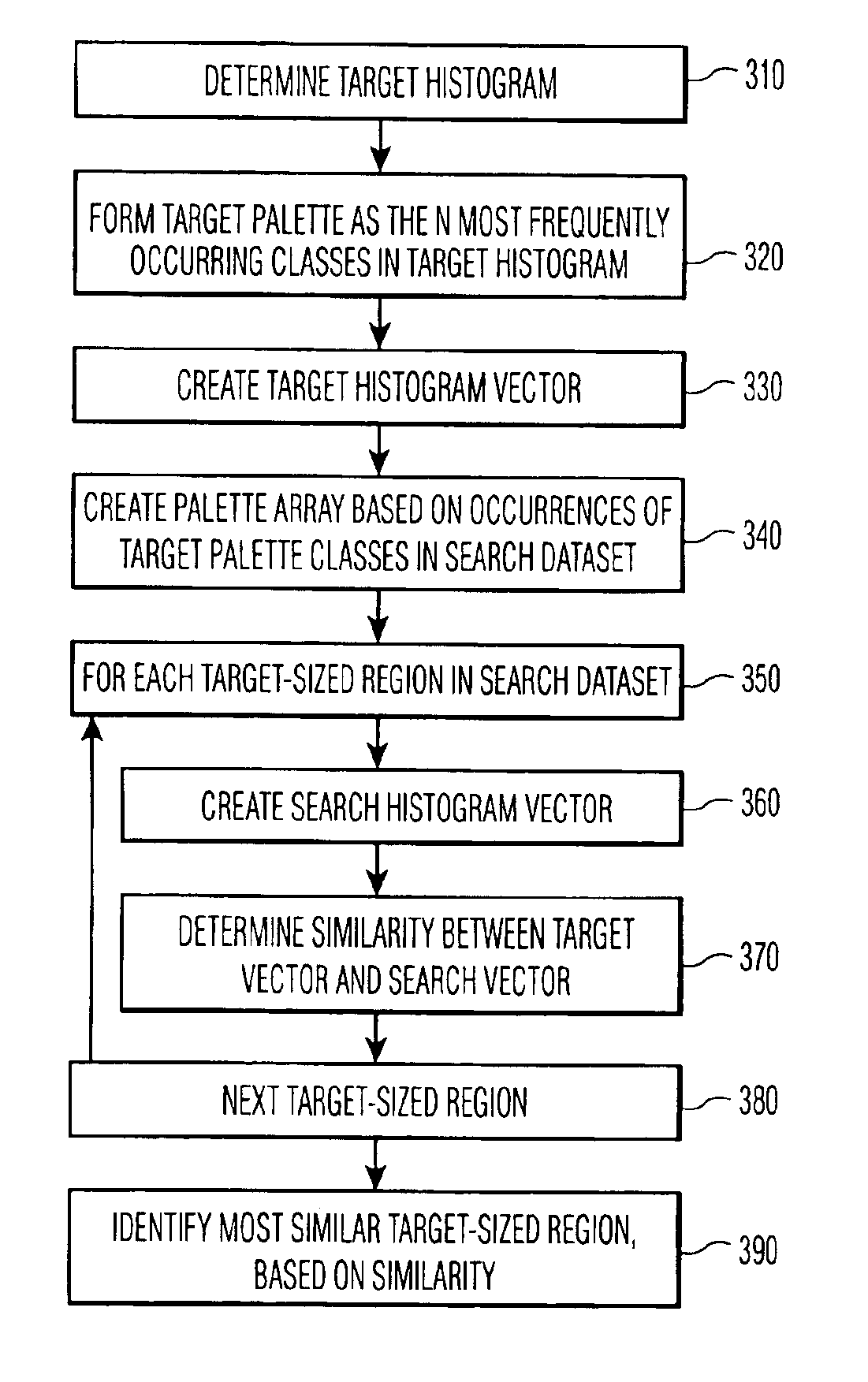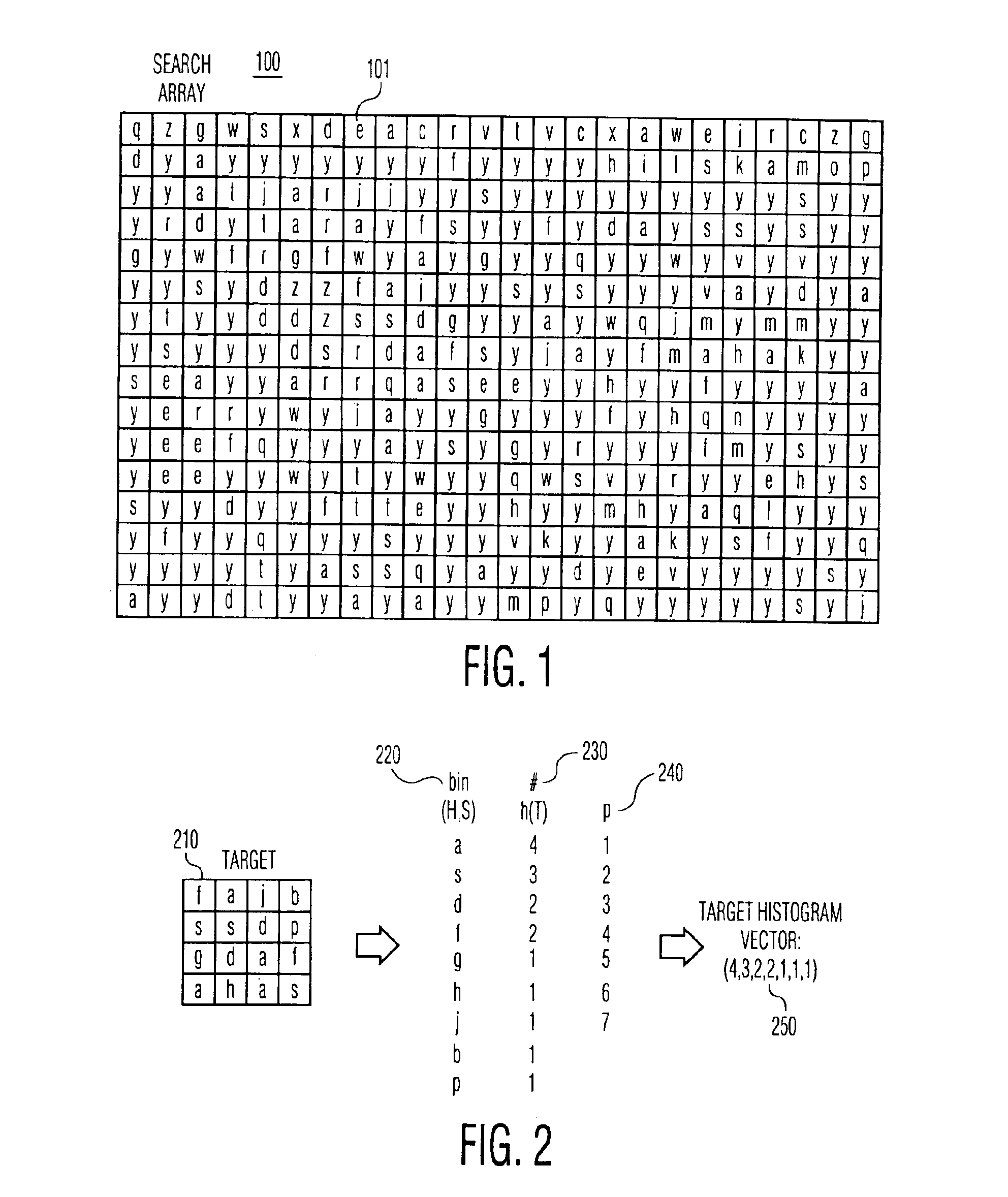Palette-based histogram matching with recursive histogram vector generation
a histogram and vector generation technology, applied in the field of image processing and pattern matching, can solve the problems of reducing the distinguishing capabilities of the histogram, excessive processing time, and often imposed compromises, and achieve the effect of sufficient distinguishing capabilities
- Summary
- Abstract
- Description
- Claims
- Application Information
AI Technical Summary
Benefits of technology
Problems solved by technology
Method used
Image
Examples
Embodiment Construction
This invention provides for a histogram-based comparison of two datasets, and is particularly well suited for locating a first dataset, or an approximation of the first dataset, within one or more regions of a larger dataset, or within one or more datasets within a larger collection of datasets. For ease of reference, the first dataset is termed a target dataset, or target. In the context of image processing, the target may be an image of a person. The histogram-based comparison process of this invention can be used to find the image of the person within a larger image of a group of people, or to find the image of the person among a collection of different images of people, or a combination of the two. Although this invention is presented using images as a paradigm dataset, it is applicable to the comparison of any sets of data based on the frequency of occurrences of classes of values (i.e. histograms), as would be evident to one of ordinary skill in the art in view of this disclos...
PUM
 Login to View More
Login to View More Abstract
Description
Claims
Application Information
 Login to View More
Login to View More - R&D
- Intellectual Property
- Life Sciences
- Materials
- Tech Scout
- Unparalleled Data Quality
- Higher Quality Content
- 60% Fewer Hallucinations
Browse by: Latest US Patents, China's latest patents, Technical Efficacy Thesaurus, Application Domain, Technology Topic, Popular Technical Reports.
© 2025 PatSnap. All rights reserved.Legal|Privacy policy|Modern Slavery Act Transparency Statement|Sitemap|About US| Contact US: help@patsnap.com



